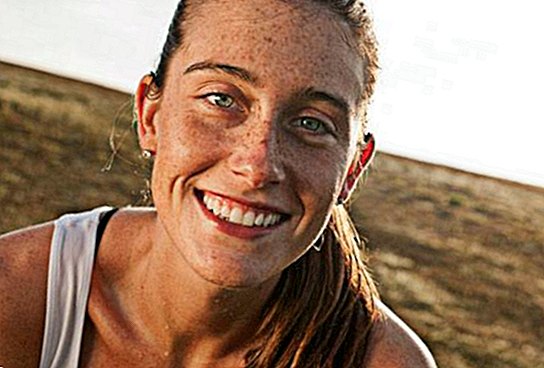This makes skin cancer screening even easier

Granted, I'm a Pedantin, as far as medical check-ups are concerned. Every five months I have a check-up with the dentist, including prophylaxis. Twice a year I go to the gynecologist. Even my vaccination is up to date. And of course, every year I go for skin cancer screening. Finally, the numbers of melanoma diseases are still rising steadily. The causes are almost always due to sins already committed. Sins, which I have also committed: excessive sunbathing, which led to some sunburns in the youth, regular visits to the solarium at the beginning of 20. Light damage, so-called freckles on my back, testify to this.
This time around, I'm going to Drs. Christoph Liebich. The Munich dermatologist has in his practice one of only 20 brand new devices for the early detection of skin cancer in Germany. This should prevent unnecessary surgery and resulting scars. "Nevisense" states. And this is how it works: A probe with small metal spikes conducts electricity through birth marks and measures the resistance (impedance). If it is noticeably different than in the skin immediately next to it, there is a change in the tissue of the birthmark. Then it definitely has to be excised and sent to the lab for a biopsy. If there is no change, it currently has no cancer potential - and does not have to be removed for testing purposes. Before Dr. Liebich reaches for the new device, he examines me, as he calls it, "from the curl to the sock" according to the ABCDE rule. The moles, which appear suspicious to him with the naked eye, that is asymmetric pigmented or blurred limited, no uniform color (color), have a diameter over half a centimeter or a survey, he takes with a so-called reflected light microscope under the magnifying glass. When the sock, that is to say arrived at the feet, it is clear: Two moles are striking from the outside, both should be removed as a precaution with a scalpel.
But now comes first "Nevisense" used. "The new device is ideal for people who have a particularly large number of suspicious moles," explains Dr. Liebich. Often, after the "Nevisensen" only half of the stains must be removed. Meanwhile, he misses my millimeter-sized suspicious moles and softens them with isotonic saline so that the current can flow better. Then it starts.
The first spot on the décolleté shows no unusual resistance. So he is harmless and may stay. Then the current flows imperceptibly through my mini birthmark on the stomach. 30 seconds later, the result is there: It must go, now, immediately! And Dr. Liebich reaches for the scalpel. For a moment, I'm shocked and ask my doctor why he's in such a hurry. He explains to me: "If it really is cancer, the birthmark must be removed as soon as possible before it can penetrate further skin layers and the bloodstream." Black skin cancer is unfortunately often fast-growing and aggressive. " So I'll stay brave. Dr. Liebich first stuns the birthmark and then removes it. He then sends it to the laboratory for biopsy.
The next few days I am restless and I feel queasy. What if it is really cancer? Finally, Dr. Liebich, the result of the biopsy is there: The birthmark had cancer potential! I ask him what that means in concrete terms. "If it had not been removed, it would eventually become cancer - maybe in two weeks, maybe two years from now." "Nevisense" was right. But once the birthmark has been successfully removed, there is no longer any risk. And I'm glad to be a pedant.
"Nevisense": early detection with electricity
The principle
"Nevisense" conducts current through moles and thus measures whether the resistances have changed with respect to the directly adjacent tissue. If so, this indicates a potential cancer potential. The "Nevisense" result is just as reliable as a biopsy.
For whom suitable
For people with many birthmarks. Would have to the ABCDE rule z. B. 30 removed, the number can be significantly reduced by the use of "Nevisense". An advantage, even for people with bad scar healing, because unnecessary surgery can be avoided. Even during pregnancy, an examination is possible. The device is unsuitable only for checks of the mucous membranes and, due to the cornea, the soles of the feet.
costs
Statutory health insurance companies do not pay the costs. The "Nevisense" probe (enough for ten birthmarks) costs 35 euros, plus the examination per spot 12 euros. Dermatologists recommend an annual check. For more information and practices nearby: Scibase.se/en










